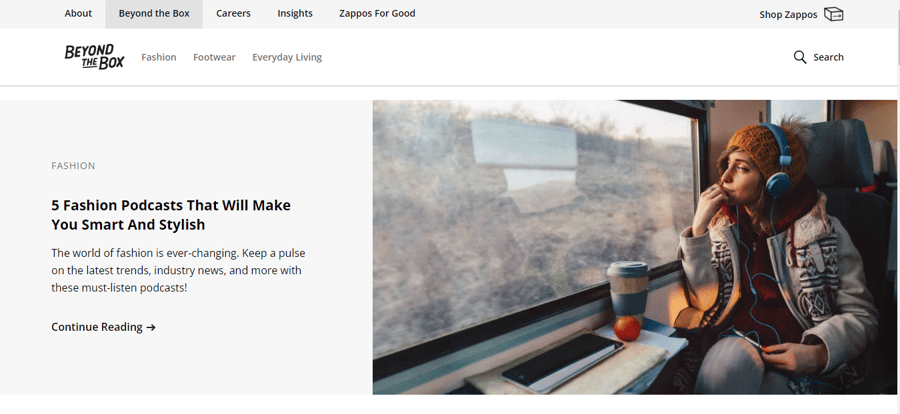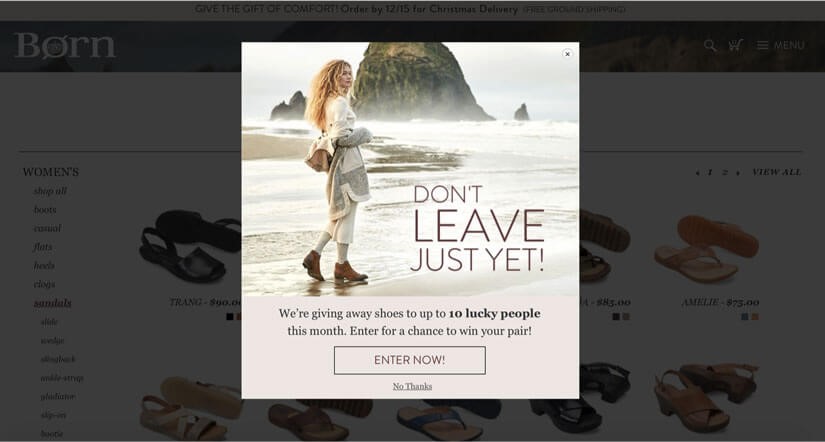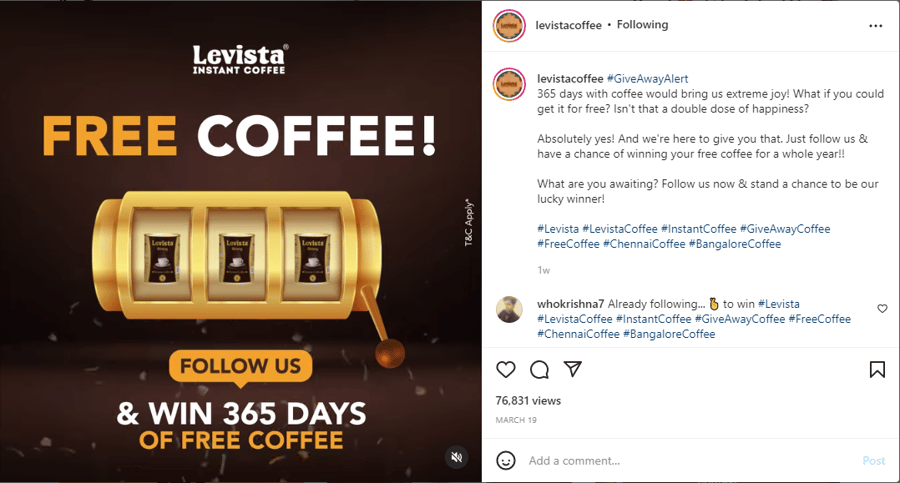
Ecommerce is a rapidly growing industry in today's digital space. There are about 24 million eCommerce sites across the world. Many eCommerce businesses are leveraging technology and innovation to drive traffic to their stores, create excellent customer experiences, and boost sales.
Digital transformation has helped many businesses abandon their traditional strategies and adopt the internet and technology for seamless business operations. Whether it is launching a website, using a marketplace management system, or being active on social media; digital transformation has simplified it for everyone.
Growing your eCommerce business can be quite challenging given the competitive market. In order to sustain the growing competition, businesses have to devise excellent promotional strategies that not only attract new customers but also retain the existing ones.
Although advertising offers several advantages, it does have some disadvantages in the long run:
- Paid ads indeed grant you immediate visibility. However, this visibility reduces to zero once you stop your ads campaign.
- Paid ads can be expensive because of the bidding wars to be on the top of Google search results. Also, you pay a certain amount for every click you receive on your ad without knowing whether or not a genuine customer is viewing your ad.
- Today, paid ads are marked as 'sponsored'. According to a study by SMA Marketing, around 70-80% of customers ignore paid ads in search results and choose to view only organic listings.
- Paid ads usually bring in additional costs for designing creative assets.
Buying ads will no doubt bring in traffic to your website. But, it will certainly be an expensive affair. In this blog, we will look at seven effective ways to boost your eCommerce store traffic organically.
Top 7 Ways to Boost Your eCommerce Store Organic Traffic
Ready to start driving more traffic to your online store without spending a penny? Let’s get started.
1. Site Optimization for SEO and Upselling
Search engine optimization, or SEO, plays a major role in driving organic traffic to your website. It helps you position your eCommerce business in the top results of search engine results pages. So, when people search for products, your website will be the first one to show up in the search results.
Conduct thorough research on product-focused keywords and optimize your content (headlines and product descriptions) accordingly. You can also conduct quick research on your competitors to understand their keyword strategy.
Ensure that your site has a rich organizational structure that can be easy to navigate. Create detailed product pages with the required description, meta content, relevant images or videos, and FAQs. Ensure that your eCommerce store has a dedicated blog.
Keep these SEO best practices in mind when designing your website.
- Check your website speed regularly. It should ideally be less than 4 seconds.
- Ensure a review widget is placed on every product page. Customer testimonials serve as an excellent medium for showcasing social proof.
- Do not forget to optimize your website for mobile devices.
- Connect your website to tools like Google Analytics, Google Search Console, and others to monitor the website performance.
In addition to SEO, you can also leverage upselling to increase website traffic.
Upselling is the most easily accessible option for eCommerce businesses to gain traffic on their website. It helps customers buy a premium product or discover additional products that would add value to their existing purchases.
Upselling helps in increasing website traffic and, as a result, sales metrics. According to Sumo, upselling increases sales revenue by approximately 10% - 30% without any additional effort. It enhances the shopping experience for customers and deepens your relationships with them.
You can display product recommendations at every step of the purchasing journey, including:
- At the bottom of the product or category page before the customer makes a purchase
- On the checkout page or cart page during the purchase, such as a pop-up window with recommended products
- In abandoned cart emails or order information emails after the purchase
2. Blogging
Blogging is an excellent medium to grow your website traffic and build brand recognition. Creating content that provides engaging information and value can help attract large audiences to your website. It also helps in stimulating interest about your products in the minds of your audience, which can result in increased sales.
Focus on creating content that caters to your industry, sparks interest in the minds of the audience, and boosts your brand image. You can create blog posts about tutorials, gifting guides, industry trends, new product updates, expert interviews, and many other topics. This will give your customers one more reason to visit your site apart from purchasing other items.
For example, Zappos’s blog “Beyond the Box” has engaging content related to footwear, fashion, and lifestyle. You will notice every article has links to products from their store. These products can be purchased in just one click.
Further, you can also subscribe to their blog newsletter to get these informative articles delivered to your email inbox.

Further, you can also write content and send it to external publishers who work in the same industry as yours. Make a list of websites and their contact points to reach out to them for guest blogging. This could be a lengthy, time-consuming process but it will give you the best results.
Work on the desired topic and do not forget to mention the name of your business in the author bio section. You can also provide your website link in this section. This method of content generation contributes significantly towards boosting your site SEO as well.
Here are some effective tips that will surely grant you success at blogging:
- Be consistent with publications. Focus on creating quality content and publishing it on a regular basis.
- Ensure that your articles have one-click social sharing options.
- Add relevant images, videos, or infographics to your articles to make them more engaging and visually appealing.
- Create takeaways like eBooks, quick guides, checklists, or other types of content for your audience
- Always add a relevant CTA to your articles. It could be a blog subscription, store visit, or something else.
- Keep revamping your older content while creating new articles.
- Promote your articles on various channels to generate additional traffic.
3. Giveaways and Contests
Everyone loves contests and receiving free products. Contests and giveaways help businesses attract an audience, generate leads, and increase traffic to their website seamlessly. It is reported by Small Business Trends that contests and giveaways show a conversion rate of approximately 34%, which is higher than other types of content.
This is why eCommerce businesses from all over the world are leveraging this interactive content type in their marketing strategy.
For example, Born Shoes is an excellent shoe company that sells classic style footwear for both men and women. They had an exclusive giveaway on their site where 10 participants could win a pair of shoes each.

Similarly, Levista Coffee organized a giveaway on Instagram giving free coffee to a lucky winner for the whole year. This giveaway is a massive success as it has already received extensive participation.

Here are some points to remember before planning your giveaway or contest:
- Define the goals you wish to achieve with your giveaway or contest. For example, you can host a giveaway to increase traffic for the upcoming season sale or to generate leads.
- Ensure that your contest or giveaway is easy to enter. The rules should be easy to understand as well.
- Decide on a good timeframe — the shorter the better. Try to create urgency by sending reminders about giveaway closing soon to the audience.
- Ensure that you interact and engage with participants and build a bond with them.
- Have a good promotion plan for your contest or giveaway. You can leverage your social media pages, email newsletters, and other community forums for the same.
- Announce the winner on time and ask the participants to keep an eye out for future giveaways.
4. Referral Program
According to the Semrush Blog, word-of-mouth is one of the top five popular ways that businesses get recommendations, followed by Facebook, Google, and Twitter.
No wonder most eCommerce businesses are relying heavily on word-of-mouth marketing strategies for product sales. A referral program can be a powerful word-of-mouth marketing tool as buyers trust recommendations from family and friends more than the brand itself.
You should encourage your customers to spread the word about your products by offering them referral incentives. These incentives could be discount coupons, free products, store credits, cash incentives, or other rewards. Promote this program on your website, social media pages, email newsletters, and other promotional mediums to attract the audience.
Amazon Prime's referral program is one of the best examples in the eCommerce industry. The referrer receives a gift card worth $5 when the customer they referred joins Amazon Prime and makes a purchase of $5.

Follow these tips to make the most of your referral program:
- Target your referral program towards existing satisfied customers who believe in your products and brand.
- Ensure that your referral program clearly states the incentives you are offering.
- Provide custom referral links with easy social sharing options.
- Send follow-up emails to customers who have shown interest in signing up for your referral program.
- Do not forget to thank your customers when they bring in new referrals.
- Use refer-a-friend software like Affise, Influitive, ReferralCandy, or InviteReferrals to streamline your referral program effort.
5. Social Media Marketing
According to Backlinko, 4.48 billion people from around the world use social media. It would be a huge mistake to not leverage social media for increasing traffic to your eCommerce website.
Customers have revealed that they are 71% more likely to purchase a product online if referred on social media.
You can use social media to promote your website, build brand identity, and advertise your products. Based on your business requirements, you can identify the best social media platforms and plan your social media strategy. Once that is done, you can start working on your content calendar and promoting your website.
Use social media to connect with your followers and build a community. Give them a quick peek into how your products are manufactured or how you pack their orders. Engage with them by replying to their comments and sharing their content.
Here are five effective tips to rock eCommerce social media marketing:
- Publish the right content consistently to see your audience grow organically.
- Always offer value to your followers. For example, if you are a clothing brand, making a short video about outfit styling that would attract and interest your followers.
- Leverage all the features these social platforms offer. For example, post Instagram Reels or live videos on Facebook.
- Configure automated messages to send out replies to your followers when you are away.
- Use social media scheduling tools like Hootsuite or Buffer to never miss out on posting on social media.
6. Email Marketing
Leveraging email marketing is yet another strategy to drive traffic to your website. Emails, being the primary mode of business communication, can prove to be an effective medium for eCommerce marketing.
Start building email lists according to the type of audience you want to target — this could be new customers, old customers, inactive customers, email subscribers, or other groups. Targeted email lists can help you to personalize your email messages according to your audience’s preferences and customer status. You can also capture the details of website visitors via opt-in forms, subscription forms, a “Contact Us” page, and messenger or chat windows.
Send out the following emails to engage your customers and increase website traffic as a result:
- Welcome Emails: These emails focus on welcoming your customers and making them comfortable with your brand.
- Abandoned Cart Emails: These emails focus on notifying customers about the products they have left in their carts.
- Promotional Emails: These emails are used to share offers, discounts, and sale announcements with your audiences.
- Upsell Emails: These emails are aimed at sharing additional recommendations for the products that customers have bought or intend to buy.
- Survey Emails: These emails focus on understanding customer requirements and their experience with your brand.
- Order-Related Emails: These emails contain all the required information about customers' orders, including shipping information and confirmation numbers.
Here are some email strategy tips that can give you better results:
- Use engaging subject lines for your emails. Spark up your creativity by writing funny, informative, or compelling subject lines to impress your audience.
- Always remember to personalize your emails according to the audience's preferences. Craft an engaging message that focuses on relieving them of their challenges, and provides an easy solution. You could also include a digital signature to build the trust of customers. For example, a user who has purchased an iPhone might want to see recommendations for a few accessories over an email that offers new phone suggestions.
- Ensure that you send emails at the right time. According to a study by Sendinblue, the best days to send eCommerce email campaigns are Tuesday and Thursday.
- Check the performance of your emails on a regular basis. By doing so, you can monitor the metrics and optimize your campaigns to achieve your goals.
Emails such as the ones mentioned above help you stay connected with your customers. It ensures they have a great experience with your brand, making it likely that they’ll return.
7. Influencer Marketing
Influencer marketing is one of the best marketing tactics businesses can follow to gain traffic to their sites. According to a survey by Digital Marketing Institute, 49% of customers rely on influencer recommendations before making product purchases.
That is why collaborating with social media influencers is beneficial for reaching out to a larger customer base. It lets you dive into their network and reach out to an entirely new audience.
To have a well-planned influencer marketing strategy, start researching the social media platforms your target audience is active on and look for popular accounts. Maintain a list of all the accounts and reach out to them over an email or a private message.
Influencer collaboration works in many ways. You can send product samples to the influencers and ask for a review on social media platforms. You can also create a special discount code, especially for the influencers, and ask them to share it with their followers. In addition to this, you can ask them to sign up for your referral or affiliate program to earn a small amount of commission on every new purchase.
As an example, let’s examine how Kroger worked with influencers on their own campaign. Kroger is a company operating supermarkets in the US. They collaborated with multiple influencers to promote Lucky Charms cereal. These influencers photographed themselves with the cereal while showing the value of the product.

Remember these tips before planning your influencer marketing strategy:
- Choose the influencers who work in your industry. For example, a beauty influencer will not be the right person to promote your business selling pet products.
- Evaluate the influencer's audience before reaching out for collaboration.
- Set clear terms for deliverables, timeline, and compensation.
- Generate custom tracking links to track the engagement.
- Ask the influencers to tag you in their stories or posts. This is an excellent way to drive traffic to your website.
- Work with multiple influencers at a time to boost your reach and engagement. You can also tap into the community of micro-influencers for better results.
- Sign up for influencer marketing software like Upfluence, HubSpot, or NinjaInfluence to streamline your processes.
Summing Up
Store traffic is essential for eCommerce sales and business growth. You can start implementing the above-mentioned tactics and bring in traffic to your website without spending a penny on paid ads. Understand your audience, deliver the right content, and watch your traffic grow.





Leave a reply or comment below